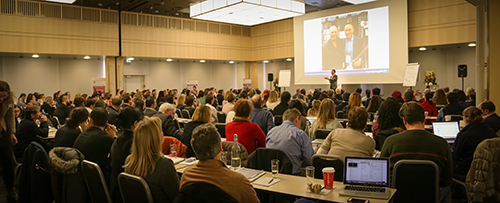When it comes to winning over more clients, sometimes you have to go back to the basics.
Rapport is a word that everyone is familiar with but one that many have forgotten the effectiveness of.
Understanding the Critter Brain
Before we look at the purpose of rapport, let’s look at the different parts that make up our brains.
Everyone has a critter portion of their brain. What this means is that to some extent, a part of our brains is organized around the same things that an animal’s brain is organized around, which is essentially safety. The critter brain wants to make sure that it’s safe and it also controls basic functions such as our breathing; anything that we don’t really need to think about but that sustains our lives physically.
The prefrontal cortex portion of the brain is more focused on quality of life. This portion of the brain would focus on decisions such as whether you should drive a BMW or a Honda or whether you should wear a blue or red shirt.
The reality is that most of what we do, think, and say is driven by the critter portion of our brains. So when someone tries to shift your beliefs, it triggers the survival patterns in your brain. This is a big part of why people tend to fear change.
The Purpose of Rapport in the Sales Process
What rapport does is give someone else the sense that they’re safe and that they belong, making it an important tool in sales, a process that requires you to shift someone’s beliefs and ideas.
Here are a few of the reasons why it’s so important to build rapport with a potential client:
- It puts the mind at ease. Rapport ensures that a potential client feels more relaxed as you make suggestions
- It allows more trust. Rapport will allow you to go deeper with a potential client when it comes to chatting about their concerns and needs
- It opens communication channels. Clients will be more willing to share things with you
- It allows for deep work to be done. Rapport encourages a client to really open up
- It enables change. When you’re in rapport with someone, it makes change a lot easier for them
Using Rapport in Meetings
Below are a few tips to help you use rapport during your sales meetings:
- Be in physical rapport. It’s really important to use physical techniques such as mirroring in all of your sales meetings.
- Pay attention to other dimensions. If the person you’re meeting with is using certain keywords quite a lot or gestures very often, use these aspects to build rapport with them using various NLP techniques such as backtracking.
- Go deeper. Go into your meeting with the intention of connecting with someone on a deeper level.
- Reconnect with yourself. After focusing on another person so intently during a meeting, you may want to take some time after your meeting to reconnect with yourself.
Advanced Rapport Tips
Below are some extra tips on building rapport that every coach, business owner or salesperson needs to know:
- You can be in rapport in more than one way with someone. You can also be in rapport with the different ages and characters that make up someone’s personality
- Rapport is far more powerful when it’s layered. This means that you’re using everything from keywords and sensory NLP techniques to vocal and physical techniques
- The more rapport you can build, the deeper the connection
- Flexibility is key!
- If you’re in a meeting with multiple people, always mirror the decision maker
Attend one of our Start At the Top Conferences to learn more about how to build rapport!



